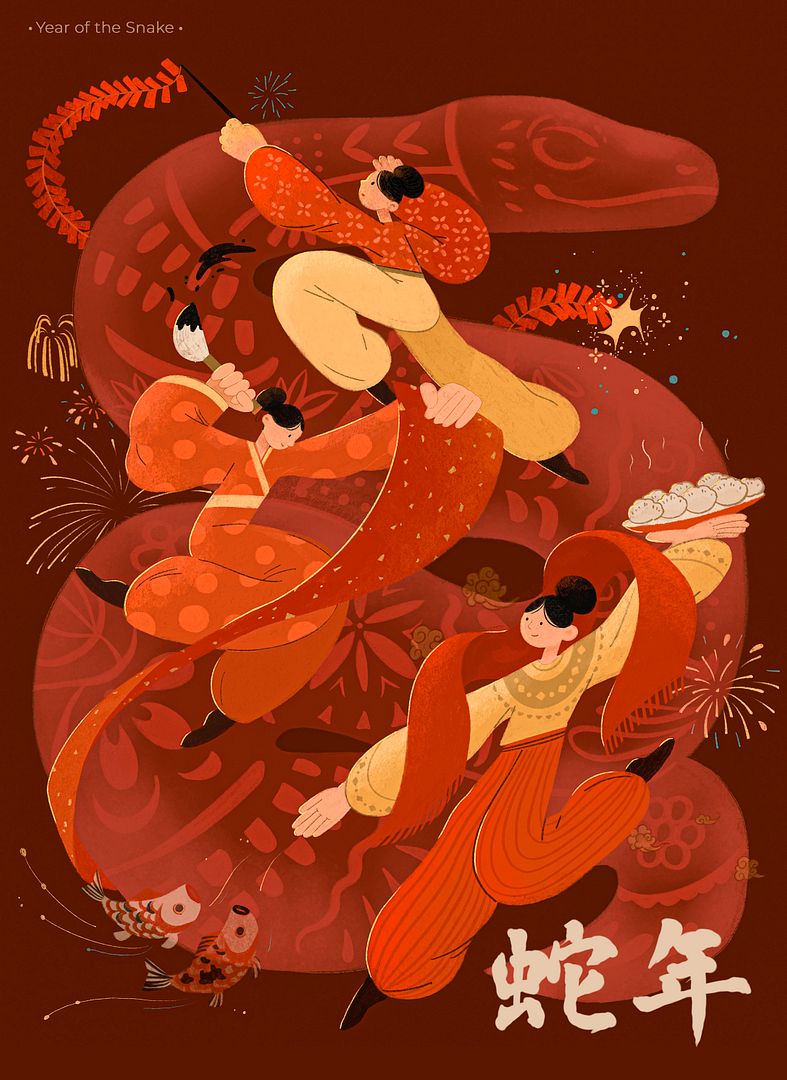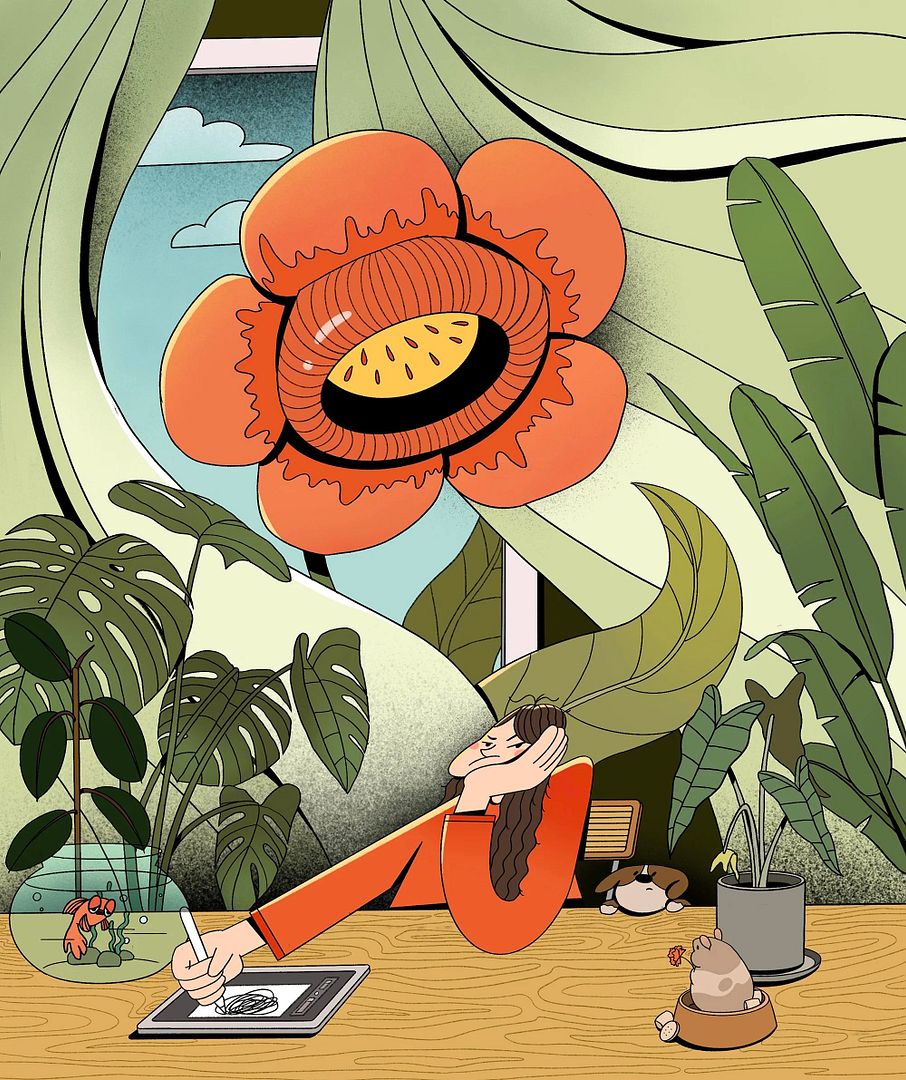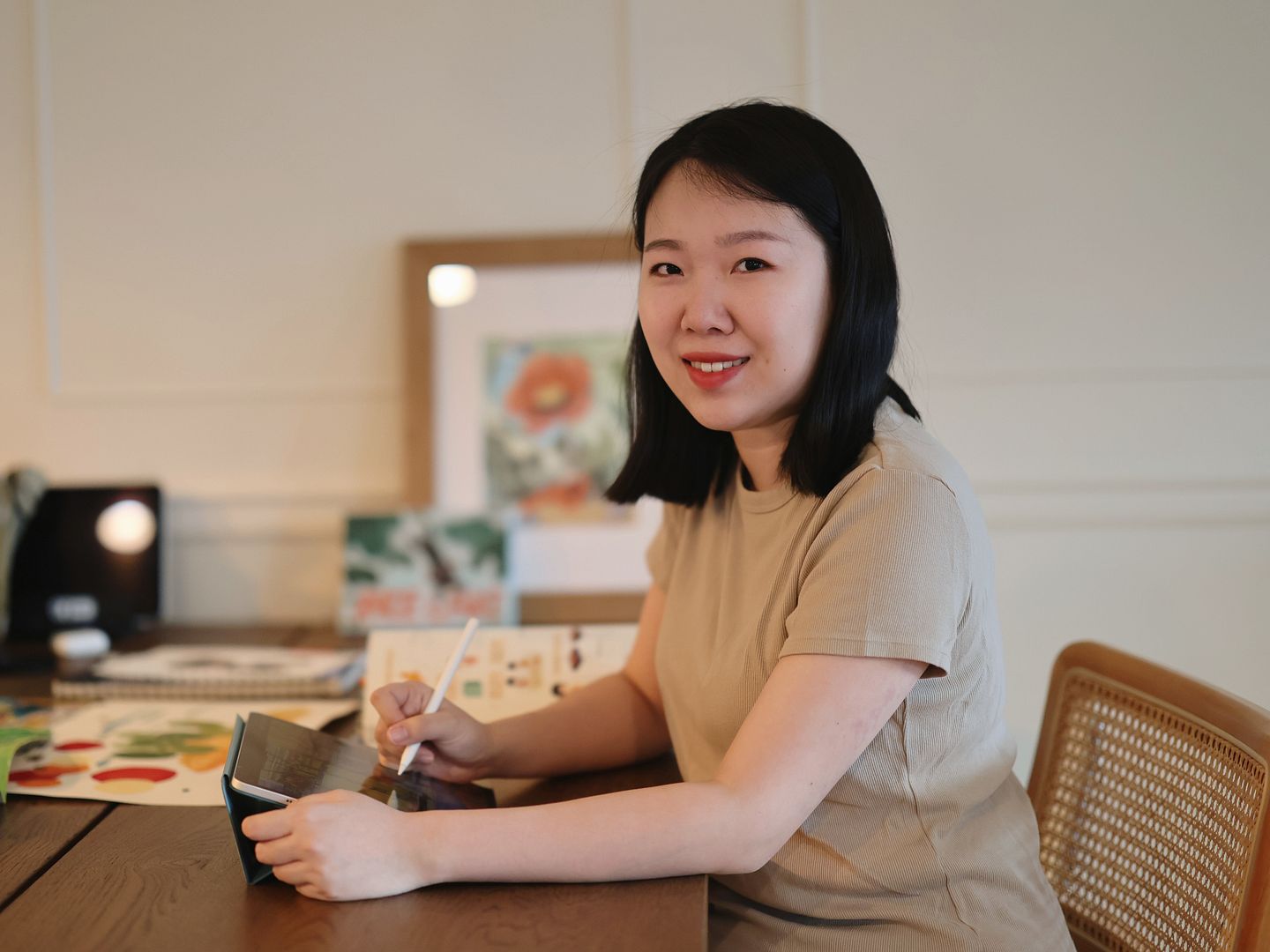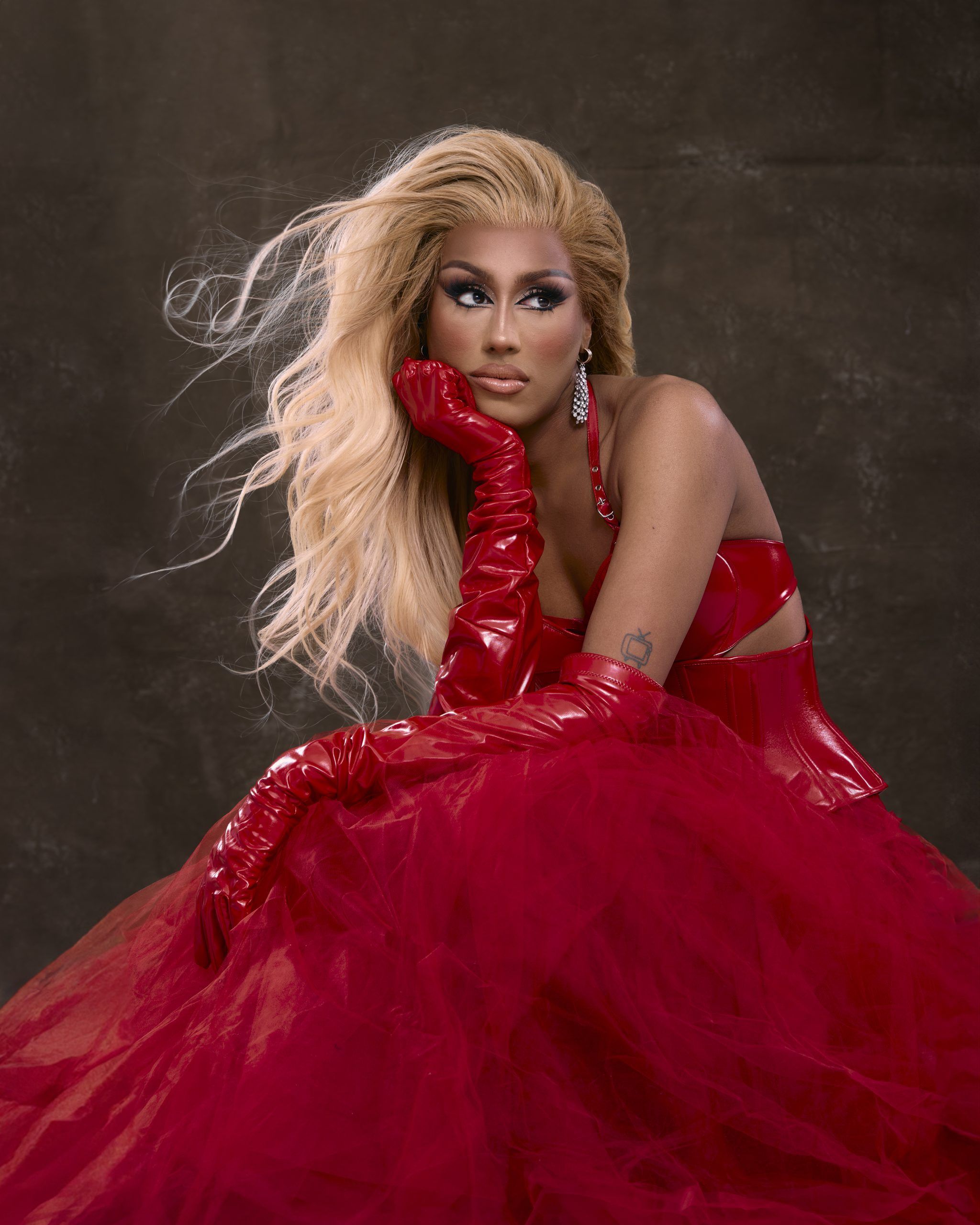
Xiaojie Yang is a Chinese-born, New York–based visual artist and creative director whose work moves fluidly between image-making, motion, and visual storytelling. Rooted in symbolism and emotional nuance, her illustrations draw from cultural memory, personal reflection, and the quiet rhythms of daily life. With a style that feels both intimate and expansive, her recent recognition at the Applied Arts Awards highlights a creative voice attuned to subtlety, storytelling, and the beauty of in-between moments.
We spoke with Xiaojie about the narratives behind her award-winning pieces, the emotional landscapes that shape her process, and how she continues to find inspiration in stillness, softness, and the poetry of the everyday.
Congratulations on winning the Applied Arts Awards for Dance of the Year of the Snake, Veiled Magic, and Fragments of the Mind! How did it feel to receive this recognition? What aspects of these works do you think contributed most to their success?
Thank you! It was both surprising and meaningful. Each piece came from a different part of me, so having them recognized together felt like a validation of my broader creative voice. I think what helped these works stand out is the emotional honesty behind them. Whether it’s cultural symbolism, surreal imagery, or inner reflection, I always try to create visuals that feel sincere and layered.

Dance of the Year of the Snake by Xiaojie Yang
Dance of the Year of the Snake beautifully merges traditional Chinese culture with a contemporary illustration style. How do you approach balancing heritage and modernity in your visual work?
I grew up surrounded by Chinese culture, so those symbols feel natural to me. When I work with traditional elements, I don’t try to make them “modern.” Instead, for Dance of the Year of the Snake, I used bold shapes and colors to bring energy and playfulness to a classic symbol. It’s more about making something that feels alive today than strictly mixing old and new.
Veiled Magic is filled with surreal imagery and a soft yet tense emotional undercurrent—it feels both dreamlike and reflective of inner struggle. Was this piece inspired by personal experience? What kind of emotional response do you hope it evokes in viewers?
Veiled Magic reflects a universal experience: being caught in emotional or mental stillness while life’s quiet wonders go unnoticed. The oversized plants and surreal flower represent growth and inspiration that can feel distant in hard moments. The little companions around the pets and plants symbolize overlooked sources of support. I wanted to explore how stillness can transform into awareness, and how beauty often appears when we pause to look. It’s a reminder that even in silence or struggle, something magical is quietly blooming.

Veiled Magic by Xiaojie Yang
Where do you usually draw inspiration for your design and illustration work?
My inspiration often comes from various emotions: longing, quiet joy, or a gentle kind of sadness. Cultural memory also runs deep in my work, shaped by childhood stories, festivals, and the textures of language. I pay close attention to everyday moments—the way my daughter hands me a leaf, or the silence between words at dinner. Above all, the love for people, for places, and for things that are fleeting fuels much of what I create. It’s often the softest feelings that leave the strongest marks on my images.
You’ve illustrated a number of educational book series. What first inspired you to start illustrating children’s educational books?
It started with a simple wish: to make learning feel less intimidating and fuller of wonder. When I first illustrated educational books, I imagined how a child might see the page—what would catch their eye, and what might make them smile. I was also drawn to the idea that images can help build understanding across different learning styles. Growing up, I loved the illustrations in my textbooks; they stayed with me longer than the lessons. I hope my drawings can do the same for the little ones.
What does a typical workday look like for you?
My workday often shifts between structure and creative flow. I spend part of the day collaborating with teams on design projects, and the other part carving out quiet time for illustration—usually in the early morning or late at night. Drawing is a more personal rhythm for me, a space where I can slow down and reflect. It’s not about output or deadlines, but about listening inward. It’s the balance between external demands and internal expression that keeps me grounded.
How did Fragments of the Mind come to life? What was the initial idea behind the piece, and how did it evolve during your creative process?
Fragments of the Mind began as a reflection on how emotions shape our inner world. I used visual metaphors to explore how we contain, chase, or carry feelings: a fish in a jar, fireflies in the dark, or a hand holding light. As I kept drawing, the work turned into a meditation on resilience and connection—with the self, with others, and with something larger. Each image is a fragment of thought. Together, they form a map of the invisible landscapes we move through.

Fragments of the Mind by Xiaojie Yang
As a female creative director, how do you perceive the role of gender and cultural identity in today’s creative industries? Have you faced any challenges in these aspects of your identity?
Being a woman and someone who lives far from where I grew up has shaped how I navigate the creative world. Earlier in my career, I sometimes felt I had to work harder to be heard or taken seriously. But over time, I’ve come to value the perspective that difference brings. My cultural background gives me a layered way of seeing, and empathy has become central to how I collaborate and lead. The industry still has a long way to go, but more diverse voices always lead to more meaningful work.
Technology is rapidly reshaping the creative landscape. From your perspective, what role should AI play in the future of visual design?
AI is a powerful tool. It can help speed up workflows, generate references, or explore possibilities we might not think of on our own. But I believe the heart of visual design will always lie in human emotion, intention, and storytelling. Technology can assist, but it shouldn’t replace the creative questions we ask or the personal truths we express. I see AI as something that expands the canvas—not the artist.

What advice would you give to young illustrators or designers starting out today?
Be patient—with your work, your growth, and yourself. It takes time to find your voice, and that’s okay. Don’t chase trends; focus on what moves you. The more honest your work is, the more it will connect. Also, stay curious. Read, observe, wander. Inspiration doesn’t only come from art—it comes from life, love, and even quiet moments. And finally, protect your joy. Create not for perfection, but for meaning—for yourself, and for those who might find something true or comforting in what you make.
Interviewed by Sophie E. Blake





